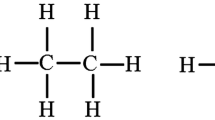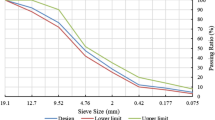Abstract
In this study, the effects of aromatic and long-chain rejuvenators on aged asphalt were investigated by molecular simulations. Asphalt integration and free diffusion models were constructed for simulating asphalt properties and aggregation behavior. The viscosity, cohesive energy density (CED), and glassy transition temperature (Tg) were calculated from the dynamics simulations. The structural and energetic changes in asphalt colloids were investigated by radial distribution function (RDF) of aromatic components and interaction energy of asphalt colloid. The results of integrated model simulations of asphalt properties show that both rejuvenators restored viscosity, CED, and Tg of asphalt. The long-chain rejuvenator as a complement to the asphalt oil fraction is significant in improving the properties of aged asphalt. The RDF results indicate that the aromatic rejuvenator has a dispersing effect on the aggregation of asphalt aromatic components. The interaction energy results reveal that the rejuvenator contributes to a new microstructure instead of restoring the aggregate.












Similar content being viewed by others
References
Williams B, Willis J (2020) Asphalt pavement industry survey on recycled materials and warm-mix asphalt usage 2019 (Information Series 138) 10th Annual Survey
Zaumanis M, Mallick RB, Frank R (2014) 100% recycled hot mix asphalt: A review and analysis. Resour Conserv Recycl 92:230–245. https://doi.org/10.1016/j.resconrec.2014.07.007
Mirwald J, Werkovits S, Camargo I et al (2020) Understanding bitumen ageing by investigation of its polarity fractions. Constr Build Mater 250:118809. https://doi.org/10.1016/j.conbuildmat.2020.118809
McDaniel R, Michael Anderson R (2001) NCHRP REPORT 452—Recommended Use of Reclaimed Asphalt Pavement in the Superpave Mix Design Method: Technician’s Manual TRANSPORTATION Internet]. Natl Coop Highw Res Progr. http://www.national-academies.org/trb/bookstore.
Wu M, Wen H, Balasingam M et al (2012) Influence of recycled asphalt pavement content on air void distribution, permeability, and modulus of base layer. Transp Res Rec 65–71
Yu J, Guo Y, Peng L et al (2020) Rejuvenating effect of soft bitumen, liquid surfactant, and bio-rejuvenator on artificial aged asphalt. Constr Build Mater 254:119336. https://doi.org/10.1016/j.conbuildmat.2020.119336
Varaus M, Koudelka T, Sperka P (2017) Rejuvenator influence on aged binder material properties. Key Eng Mater 730:380–388
Elkashef M, Williams RC (2017) Improving fatigue and low temperature performance of 100% RAP mixtures using a soybean-derived rejuvenator. Constr Build Mater 151:345–352. https://doi.org/10.1016/j.conbuildmat.2017.06.099
Gong M, Yang J, Zhang J et al (2016) Physical-chemical properties of aged asphalt rejuvenated by bio-oil derived from biodiesel residue. Constr Build Mater 105:35–45. https://doi.org/10.1016/j.conbuildmat.2015.12.025
Zaumanis M, Mallick R, Frank R (2013) Evaluation of rejuvenator’s effectiveness with conventional mix testing for 100% reclaimed Asphalt pavement mixtures. Transp Res Rec 17–25
Ma Y, Hu W, Polaczyk PA et al (2020) Rheological and aging characteristics of the recycled asphalt binders with different rejuvenator incorporation methods. J Clean Prod 262:121249. https://doi.org/10.1016/j.jclepro.2020.121249
Petersen JC (2009) A review of the fundamentals of asphalt oxidation: Chemical, physicochemical, physical property and durability relationships. Transportation Research Circular E-C140
Xu G, Wang H, Sun W (2018) Molecular dynamics study of rejuvenator effect on RAP binder: diffusion behavior and molecular structure. Constr Build Mater 158:1046–1054. https://doi.org/10.1016/j.conbuildmat.2017.09.192
Zadshir M, Hosseinnezhad S, Fini EH (2019) Deagglomeration of oxidized asphaltenes as a measure of true rejuvenation for severely aged asphalt binder. Constr Build Mater 209:416–424. https://doi.org/10.1016/j.conbuildmat.2019.03.090
Cui B, Gu X, Hu D et al (2020) A multiphysics evaluation of the rejuvenator effects on aged asphalt using molecular dynamics simulations. J Clean Prod 259:120629. https://doi.org/10.1016/j.jclepro.2020.120629
Li C, Rajib A, Sarker M et al (2021) Balancing the aromatic and ketone content of bio-oils as rejuvenators to enhance their efficacy in restoring properties of aged bitumen. ACS Sustain Chem Eng
Pahlavan F, Hung AM, Zadshir M et al (2018) Alteration of π-electron distribution to induce deagglomeration in oxidized polar aromatics and asphaltenes in an aged asphalt binder. ACS Sustain Chem Eng 6:6554–6569
You L, Spyriouni T, Dai Q et al (2020) Experimental and molecular dynamics simulation study on thermal, transport, and rheological properties of asphalt. Constr Build Mater 265:120358. https://doi.org/10.1016/j.conbuildmat.2020.120358
Li DD, Greenfield ML (2014) Chemical compositions of improved model asphalt systems for molecular simulations. Fuel 115:347–356
Xu G, Wang H (2017) Molecular dynamics study of oxidative aging effect on asphalt binder properties. Fuel 188:1–10. https://doi.org/10.1016/j.fuel.2016.10.021
Luo L, Chu L, Fwa TF (2021) Molecular dynamics analysis of oxidative aging effects on thermodynamic and interfacial bonding properties of asphalt mixtures. Constr Build Mater 269:121299. https://doi.org/10.1016/j.conbuildmat.2020.121299
Claire A, Schrøder TB, Dyre JC et al (2013) Cooee bitumen: chemical aging. J Chem Phys 139:1–36
Ma X, Wu J, Liu Q et al (2021) Molecular dynamics simulation of the bitumen-aggregate system and the effect of simulation details. Constr Build Mater 285:122886
Bunte SW, Sun H (2000) Molecular modeling of energetic materials: the parameterization and validation of nitrate esters in the COMPASS force field. J Phys Chem B 104:2477–2489
Chickosa JS, Acree WE (2002) Enthalpies of sublimation of organic and organometallic compounds 1910–2001. J Phys Chem Ref Data 31:537–698
Sun H, Jin Z, Yang C et al (2016) COMPASS II: extended coverage for polymer and drug-like molecule databases. J Mol Model 22:1–10
Wei J, Dong F, Li Y et al (2014) Relationship analysis between surface free energy and chemical composition of asphalt binder. Constr Build Mater 71:116–123. https://doi.org/10.1016/j.conbuildmat.2014.08.024
Ruan Y, Davison R, Glover C (2003) An investigation of asphalt durability: relationships between ductility and rheological properties for unmodified asphalts. Pet Sci Technol 21(1 & 2):231–254
Lemarchand CA, Schrøder TB, Dyre JC et al (2013) Cooee bitumen: chemical aging. J Chem Phys 139:1–36
Tabatabaee HA, Kurth TL (2017) Analytical investigation of the impact of a novel bio-based recycling agent on the colloidal stability of aged bitumen. Road Mater Pavement Des 18:131–140. https://doi.org/10.1080/14680629.2017.1304257
Kang Y, Zhou D, Wu Q et al (2019) Molecular dynamics study on the glass forming process of asphalt. Constr Build Mater 214:430–440. https://doi.org/10.1016/j.conbuildmat.2019.04.138
Cebon D, Cheung CY (2015) Deformation mechanisms of bituminous materials. Adv Asph Mater Road Pavement Constr. Elsevier Ltd. https://doi.org/10.1016/B978-0-08-100269-8.00006-4.
Soldera A, Metatla N (2006) Glass transition of polymers: atomistic simulation versus experiments. Phys Rev E Stat Nonlinear, Soft Matter Phys 74:1–6
Xu M, Zhang Y (2020) Study of rejuvenators dynamic diffusion behavior into aged asphalt and its effects. Constr Build Mater 261:120673. https://doi.org/10.1016/j.conbuildmat.2020.120673
Mohd Hasan MR, You Z, Yang X et al (2017) Quantification of physicochemical properties, activation energy, and temperature susceptibility of foamed asphalt binders. Constr Build Mater 153:557–568. https://doi.org/10.1016/j.conbuildmat.2017.07.123
Sedghi M, Goual L, Welch W et al (2013) Effect of asphaltene structure on association and aggregation using molecular dynamics. J Phys Chem B 117:5765–5776
Pahlavan F, Mousavi M, Hung A et al (2016) Investigating molecular interactions and surface morphology of wax-doped asphaltenes. Phys Chem Chem Phys 18:8840–8854
De León J, Hoyos B, Cañas-Marín W (2015) Insights of asphaltene aggregation mechanism from molecular dynamics simulation. Dyna 82:39–44
Yaseen S, Mansoori GA (2017) Molecular dynamics studies of interaction between asphaltenes and solvents. J Pet Sci Eng 156:118–124. https://doi.org/10.1016/j.petrol.2017.05.018
Ahmadi M, Chen Z (2021) Comprehensive molecular scale modeling of anionic surfactant-asphaltene interactions. Fuel 288:119729. https://doi.org/10.1016/j.fuel.2020.119729
Acknowledgements
The authors are grateful for the funding provided by the National Natural Science Foundation of China (51508223), the Jilin Province Natural Science Foundation of China (20160101267JC), and the Science and Technology Research and Development Project of China Communications Construction Company (3R2210135424).
Author information
Authors and Affiliations
Corresponding author
Ethics declarations
Conflict of interest
No potential conflict of interest was reported by the authors.
Additional information
Publisher's Note
Springer Nature remains neutral with regard to jurisdictional claims in published maps and institutional affiliations.
Rights and permissions
About this article
Cite this article
Bao, C., Xu, Y., Zheng, C. et al. Rejuvenation effect evaluation and mechanism analysis of rejuvenators on aged asphalt using molecular simulation. Mater Struct 55, 52 (2022). https://doi.org/10.1617/s11527-022-01890-3
Received:
Accepted:
Published:
DOI: https://doi.org/10.1617/s11527-022-01890-3




